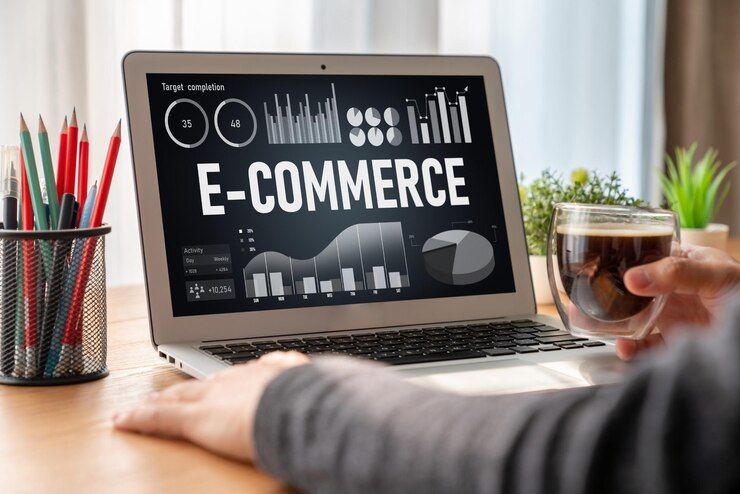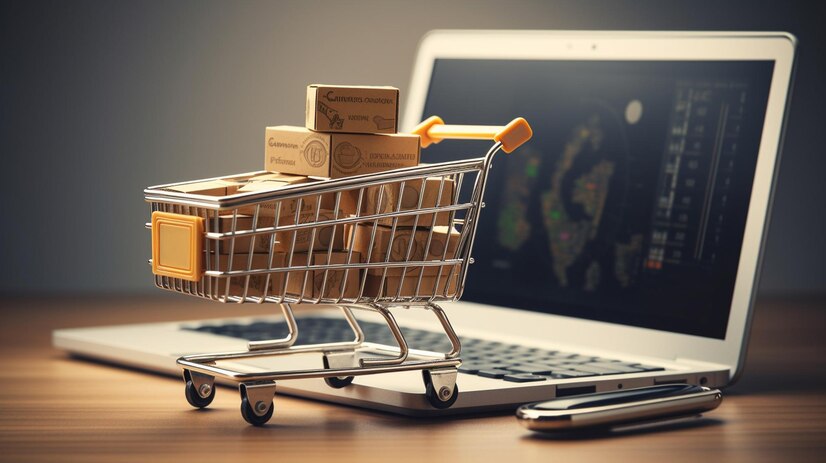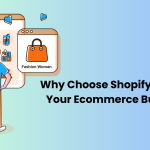In today’s digital environment, merely having a vision for your business is not enough. If you plan to explore e-commerce opportunities, you need to ponder beyond stocking up goods. Current businesses demand strategic decision making regarding business models and platforms.
The first and the foremost step of starting an ecommerce business includes a broad understanding of your target market. Once you’ve the right data about your potential audience, their needs and requirements and gaps in the market – it’s time to choose the right e-commerce platform.
Let’s begin with the basics and as we move along, we’ll guide you about selecting and incorporating the right e-commerce business model and platform for your venture. Jump ahead!
Understanding Basics: What is an E-commerce Platform?
An E-commerce platform is a software combination of a content management system (CMS) and a website designed to manage online catalogs, facilitate online buying and selling, and maintain customer relationships with a retailer. Modern companies that are always on the cutting edge host their own eCommerce platforms on the cloud rather than internally. Along with being more affordable and simpler to install, this also means improved security and increased availability when partnered with a trustworthy supplier.
The Most Prevalent E-Commerce Business Models
Most E-commerce business models are flexible enough to adapt to the changing market needs, thus scalability and future growth are guaranteed for your business success. Every business model has its own features, pros, cons, challenges and costs. Therefore, it is essential to choose the one compatible with your business ideology.
1. Business-to-Consumer (B2C)
B2C, as the name implies, refers to the business model where companies sell to customers directly. Every purchase you make as a customer from clothing and home goods to entertainment in an online store is a business-to-consumer transaction. When it comes to lower-value purchases, in particular, the decision-making process for a business-to-consumer (B2C) transaction is far shorter.
B2C companies often spend less on marketing to close a deal than their B2B counterparts, despite having a lower average order value and fewer recurring orders due to this shorter sales cycle. B2C encompasses both goods and services. Innovators in the business-to-consumer (B2C) space have used technologies such as remarketing, native advertising, and mobile apps to sell directly to consumers and improve their quality of life.
2. Business-to-Business (B2B)
A business-to -business model includes transactions between multiple businesses. The business, which buys products or services, sometimes is the ultimate end-user. However, it may be possible that the buyer further resells to consumers. This model consists of manufacturers, wholesalers and suppliers in general.
B2B includes the buying and selling in bulk. It generally has a higher order-value, with recurring purchases. Furthermore, the B2B sales cycle tends to be longer compared to the B2C model.
3. Consumer-to-Consumer (C2C)
An E-commerce business model where consumers sell directly to consumers is known as C2C model. This is also called online marketplaces. Though C2C’s growth is driven by self-motivated buyers and sellers, quality assurance and technological assistance remain major challenges. Early adopters of the C2C model included companies like Craigslist, eBay, Walmart, and Alibaba.
4. Consumer-to-Business (C2B)
In a C2B model, individuals either from a diversified skill set or stock of goods or services, sell to businesses. In this E-commerce model, a site might be built to enable consumers to post their products or services and have companies bid on them. Freelancers offering their services (Such as Fiverr and Upwork platforms) and influencers promoting brands exemplify this model.
5. Direct-to-Consumer (D2C)
With the help of this approach, organizations may directly manage customer experience and purchasing and selling processes.
6. Business-to-Government (B2G)
Business-to-government (B2G) is a type of e-commerce model in which businesses sell and market their products to government entities or public administration. This model is dependent on winning government contracts through a competitive bidding process.
Government agencies typically issue requests for proposals (RFP), which businesses must bid on in order to secure projects.

Choosing A Relevant & Well-Suited E-Commerce Platform for Your Business
No doubt, identifying the right e-commerce model is a primary step for the success of your online business. Choosing the best E-commerce platform serves as a cornerstone for your venture. A well-suited platform will pave the way for your website’s functionality, user experience and business scalability.
Let’s explore a few of the top E-commerce platforms below:
1. Shopify
Shopify is a popular ecommerce platform used by over 1 million businesses to sell products online and process payments and market goods to customers. It offers benefits such as user-friendly interface, a wide range of apps, customizable design options, 24/7 community support, and scalability for growing businesses.
2. WooCommerce
WooCommerce is an open-source E-commerce plugin for WordPress. It enables you to either extend your existing website into an online store or launch a new one. WooCommerce’s flexibility, scalability, and integration with other WordPress plugins are some of its benefits. It is a highly customizable platform, yet requires a high level of technical know-how. You will have to handle your own hosting and security, though, the best is if you have prior WordPress expertise.
3. BigCommerce
BigCommerce is a cloud-based E-commerce platform that offers comprehensive features such as secure hosting, strong SEO capabilities, multi-channel selling support, and no transaction fees. It is a well-suited platform for big organizations as it helps manage high-volume sales. BigCommerce is not an affordable option for startups and small ventures.
4. Wix
Wix offers dropshippers, retailers, and service providers tools that are easy to use even for beginners. 2GB of limitless storage space and round-the-clock customer support are included in subscriptions.
5. Magento
Magento is a highly flexible, scalable, and open-source E-commerce platform. This platform offers unwavering customizable options and solutions to your complex business needs. Suitable for large companies, it provides complex inventory and logistics management capabilities.
Final Words
E-commerce market has seen a major surge in recent times. Particularly after Covid-19, the market skyrocketed like there was no going back. And there wasn’t any going back, for sure!
Since then, it has exploded in features such as innovation, real-time support, user experience, and scalability. Picking up the right E-commerce model and platform for your business will open up new avenues of growth, adaptability, and operations management. So what are you waiting for!
Take the next step ahead in the future with the help of Stackup Solutions, you won’t have to worry about the second option. Our cutting-edge solutions are designed to help businesses build, innovate and grow. We offer customize E-commerce solutions for your business needs — without hassle and with the help of industry experts.

FAQs
1. What factors should I consider when choosing an e-commerce platform?
When choosing an e-commerce platform, consider the following factors:
- Budget: Determine your budget for setting up and maintaining your e-commerce store, including costs for hosting, transaction fees, plugins, and themes.
- Scalability: Ensure the platform can grow with your business, handling increased traffic, and product listings.
- Customization: Consider how much control you need over your store’s design and functionality.
- Technical Expertise: Evaluate your technical skills and resources.
- Integration: Ensure the platform integrates with your existing systems, such as inventory management, CRM, and marketing tools.
2. What are the main differences between B2C and B2B e-commerce models?
The main differences between B2C (Business-to-Consumer) and B2B (Business-to-Business) e-commerce models are their target audience. B2C targets individual consumers, while B2B targets other businesses. Moreover, B2C typically involves smaller order volumes, while B2B involves larger, bulk orders.
3. Can I switch e-commerce platforms if my business grows or my needs change?
Yes, you can switch e-commerce platforms if your business grows or your needs change, but it can be a complex process since you will have to migrate all your data, your store’s design and customization may need to be rebuilt or adapted. Additionally, switching platforms can incur additional costs, including setup fees, new subscriptions, and costs for technical assistance.


.jpeg)

